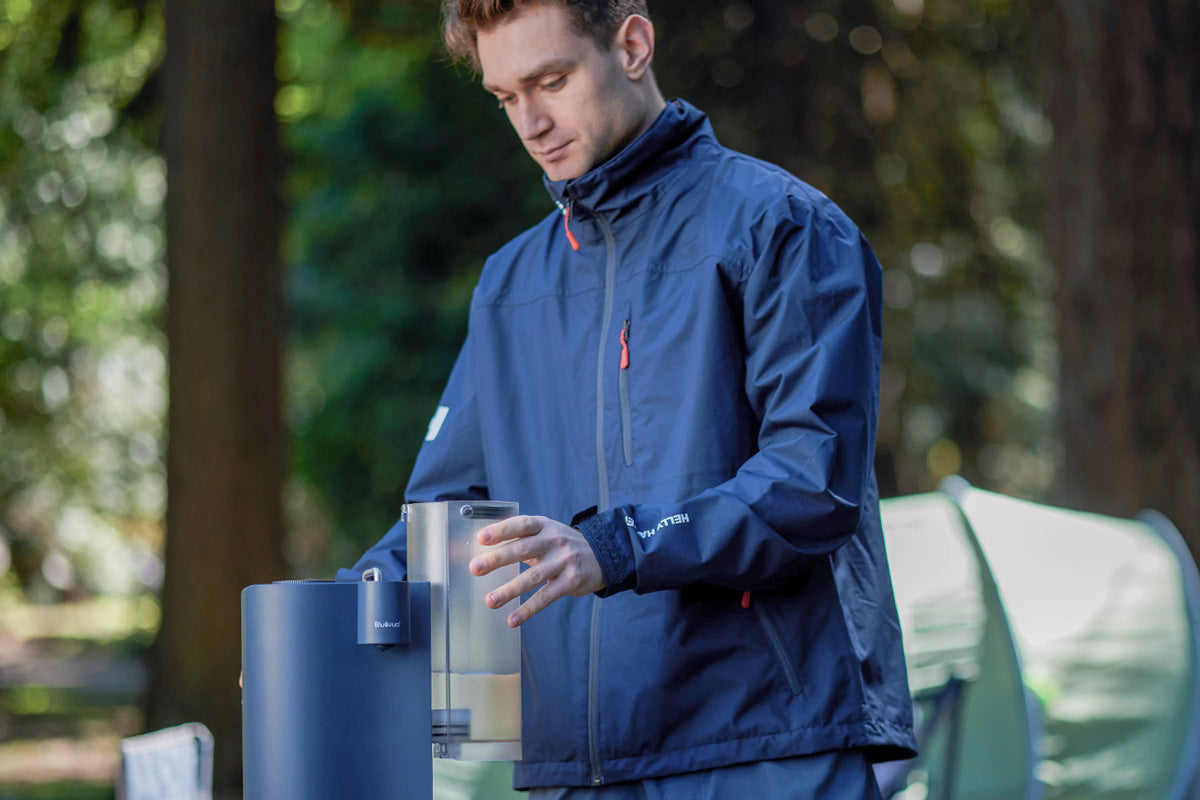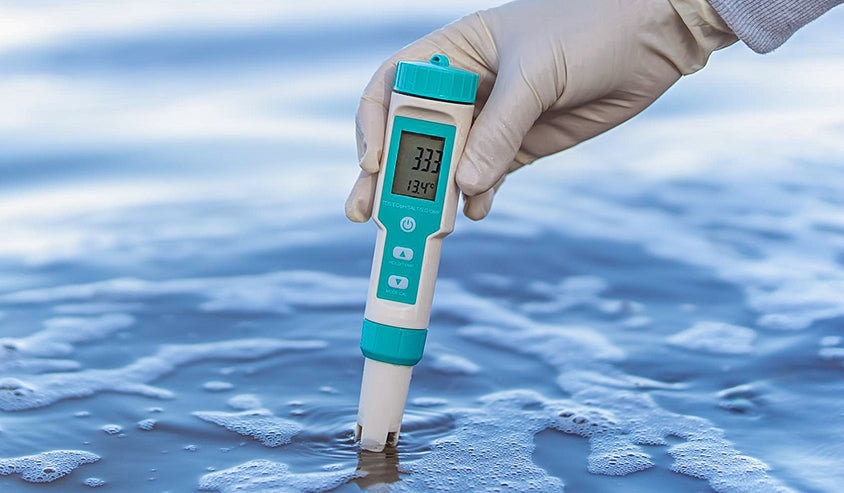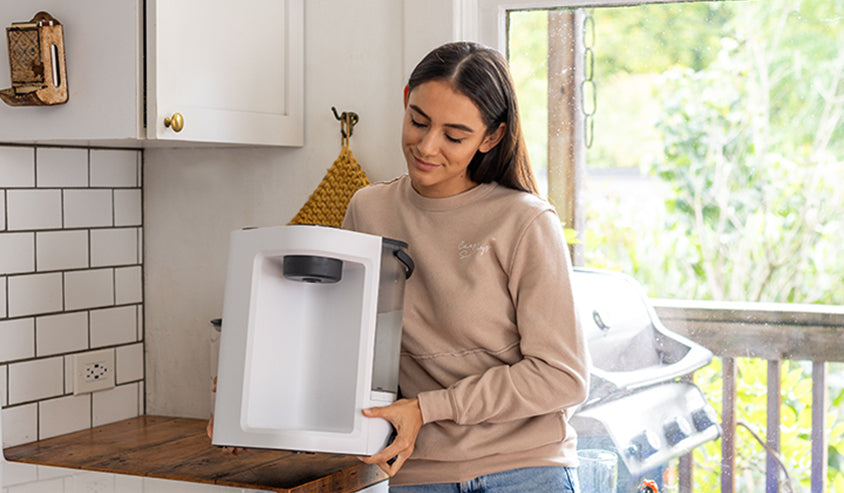TDS is a big part of figuring out how clean water is, but it's not the only thing that matters. We'll talk about what TDS is, where it comes from, how it affects water quality, and why it's important to look at but not enough to determine if our drinking water is safe. Get ready to see with fresh eyes how we keep our water so clear.
TDS in Our Water
What is TDS?
Okay, so picture this: you’ve got a glass of water, right? Now, sprinkle in a little salt, add some minerals, and maybe even toss in some tiny metal bits. That’s the vibe we’re talking about with Total Dissolved Solids, or TDS for short. Okay, so let’s talk about what’s really in your water! Think of it like a recipe that’s got all these extra ingredients mixed in—some are awesome for you, and others, well, not so much. So when we talk about TDS, we’re referring to the combined total of organic and inorganic substances contained in a liquid that is present in a molecular, ionized, or micro-granular suspended form.
What Are the Sources of TDS in Our Water?
In water, TDS mostly comes from human activities and natural sources. As water runs across the soil and over rocks in natural settings, it picks minerals such as calcium, magnesium, and potassium, therefore adding to its TDS count. Some geological formations might release harmful substances like arsenic or lead into the water, raising TDS levels on the other hand.

From heavy metals to synthetic organic compounds, man-made contaminants, including industrial runoff, agricultural chemicals, urban growth, and wastewater discharges, can add a spectrum of pollutants, raising the TDS levels.
Examining how these materials enter our water, absorption from the ground, river and stream transportation, and municipal water system infiltration all play roles. Every stage of the water cycle has the ability to increase the variety and quantity of dissolved solids in our water supply.
The Impact of TDS on Drinking Water Health
Though they sound technical, Total Dissolved Solids (TDS) are essentially about the small particles dissolved in our water—minerals, and salts that can change the taste of water and impact appliances. High TDS water will taste bitter or salted. TDS should ideally be just perfect for a good flavor and to maintain kitchenware and pipes free of scale.
Although TDS affects taste, health may be impacted by the individual components including calcium, magnesium, chloride, fluoride, and sulfates. An Australian study reveals that communities with high levels of TDS, alkalinity, total hardness, and pH experienced higher instances of ischemic heart disease and acute myocardial infarction than those with lower levels. Some minerals in high concentrations may help the arteries to become harder, thereby increasing the risk of heart attacks.

While the WHO(World Health Organization) advises that water with less than 300 ppm of TDS is of exceptional quality, the U.S. EPA(Environmental Protection Agency) sets the maximum contaminant level for TDS at 500 ppm. Meanwhile, for optimal drinking water, a TDS level below 50 ppm is typically viewed as ideal for direct consumption.These criteria are based on a dedication to reducing health hazards connected with mineral-heavy or contaminated water; they are not random. Clearly, a key first step in preserving our cardiovascular health is keeping TDS levels within the advised range.
Why Can't Total Dissolved Solids (TDS) Be the Sole Water Quality Standard?
Total Dissolved Solids (TDS) is a fundamental chemical parameter for water quality assessment. However, TDS's limited reach makes it difficult to be the only water quality benchmark.
Comprehensiveness in Water Testing
Aware that one-size-fits-all rules are unworkable, the WHO provides a range of advised values in its Drinking Water Guidelines for more than 60 criteria. Local authorities, working with ISO-certified labs, are in charge of making sure these flexible criteria are satisfied via consistent, thorough testing conducted by skilled professionals as part of overall water quality inspections. Food and Agriculture Organization of the United Nations takes together physical, chemical, and bacteriological tests to help establish water safety.
- Physical tests: Detect sensory characteristics like color and turbidity that point to possible aesthetic and practical water problems.
- Chemical tests: Including TDS, chemical tests help to determine mineral and organic material levels that affect the chemical composition and suitability for the use of water.
- Bacteriological tests: Essential for showing fecal contamination and the presence of bacteria.
Each type of test addresses different contamination aspects; TDS focuses on dissolved inorganics but isn't designed to evaluate microbiological content.

Why Can't TDS Measurements Detect Bacteria and Microorganisms in Water?
TDS, or Total Dissolved Solids, measures a water sample's overall ionic content, relying on electrical conductivity. These conductive contents come from dissolved salts and inorganic materials such as alkalis, chlorides, sulfides, and carbonate compounds. Conductivity increases as the concentration of these soluble substances increases. But microbes and bacteria have little bearing on TDS values since:
- Unlike dissolved ions, bacteria and other microbes usually lack an electrical charge that adds to the conductivity of water.
- In water, these entities are particulate and insoluble; they remain whole instead of disintegrating into charged particles that would affect conductivity.
This is the limitation of TDS meters, as they are not designed to detect biological pollutants. "Zero TDS" water, for example, could still include bacteria or other microorganism. Customers may mistakenly interpret zero TDS readings as indicating 'pure, safe-to-drink' water, which isn't always the case, and this can lead to possible confusion.
Why Is TDS Value Important in Assessing RO Water Purifier Performance?
Reverse Osmosis (RO) water purifiers are renowned for their ability to filter out impurities through a semi-permeable membrane with pores as minuscule as 0.0001 micrometers. By excluding particles larger than the pore size, such systems effectively reduce Total Dissolved Solids (TDS) levels.

The TDS value in water reflects its ionic content and serves as a crucial indicator of Reverse Osmosis (RO) filtration efficiency. A well-functioning RO membrane typically achieves a rejection rate above 90%, significantly reducing TDS levels post-filtration. This rate is calculable by comparing the pre- and post-filtration TDS levels using the formula: Rejection = (Pre-filtration TDS - Post-filtration TDS) / Pre-filtration TDS x 100. For instance, with pre-filtration TDS at 300 ppm and post-filtration at 20 ppm, the rejection rate would be (300 - 20) / 300 x 100 = 93.3%, indicating the system's proficiency in purifying water.
The rejection rate is inherently linked to the filtration efficiency of the RO membrane. A standard or higher rejection rate indicates not only the physical integrity of the membrane but also its precise filtration capabilities. The 0.0001 micrometer precision ensures that not only dissolved ions but also larger entities such as bacteria and microorganisms are effectively removed from the water.
Bacteria like E. coli, which measures between 1 to 2 micrometers, being much larger compared to the fine pores, are reliably blocked due to the physical barrier provided by the membrane. Therefore, a normal rejection rate confirms the integrity of the RO membrane’s filtration capability and its efficacy in excluding uncharged particles, including bacteria and microorganisms, safeguarding the potability of the treated water.
Examining how microbial filtration is confirmed and validated helps to guarantee complete knowledge of the filtration process and the efficiency of RO systems.
For consumers seeking assurance about their water purifier's performance, third-party test reports provide reliable verification. These independent assessments confirm whether an RO system can indeed filter out microbes up to certain sizes, with the implication being that any larger particles or organisms would also be successfully excluded from the final product. This step-by-step verification illustrates the RO system’s ability to deliver safe, potable water.
What Are the Pros and Cons of Using TDS for Water Quality Testing?
Advantages of TDS in Water Quality Testing:
- TDS meters are easy to use and call for little technical understanding to run. This simplicity extends to purchasing equipment, making it accessible for most consumers.
- Reverse Osmosis (RO) system performance can be shown by TDS readings. Consistent rejection rates indicate an intact RO membrane, guaranteeing efficient filtering and water safety.
Disadvantages of TDS in Water Quality Testing:
- Limited Detection Scope: TDS readings solely represent charged particles in scope. Being uncharged, bacteria and other microbes are undetected.
- Some vendors may falsify TDS results by manipulating electrical charges, therefore producing a misleading impression of better water quality without really removing pollutants.
In Summary
TDS should not be the only indicator of water quality, even if it helps evaluate the general mineral content of tap water and the functionality of an RO system. When assessing a product, consumers should ensure the vendor offers explanations on water purifying technology and thorough post-sale assistance, and we should refer to third-party reports for further information. Looking beyond TDS values is absolutely vital since some marketers may use a zero TDS to promote water that may not be pure. Hence, selecting a recognized and technologically transparent brand helps one avoid possible complexities. Such carefulness might provide comfort about the quality and safety of drinking water.






Hinterlasse einen Kommentar
Alle Kommentare werden vor der Veröffentlichung geprüft.
Diese Website ist durch hCaptcha geschützt und es gelten die allgemeinen Geschäftsbedingungen und Datenschutzbestimmungen von hCaptcha.